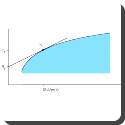 The Treynor Ratio (reward-tovolatility ratio) was developed by Jack Treynor, one of the fathers of modern portfolio theory. The ratio measures the returns earned from a portfolio over and above the normal return that would have been earned on a risk-free investment. The formula for the Treynor Ratio is: average return of the portfolio minus average return of the riskfree rate divided by the beta of the portfolio. In short, the excess return over the risk-free return of the portfolio is divided by the beta of the portfolio to get the Treynor Ratio. Beta is a measure of market-related risk in a stock or collection of stocks. A high Treynor Ratio indicates better performance.
The Treynor Ratio (reward-tovolatility ratio) was developed by Jack Treynor, one of the fathers of modern portfolio theory. The ratio measures the returns earned from a portfolio over and above the normal return that would have been earned on a risk-free investment. The formula for the Treynor Ratio is: average return of the portfolio minus average return of the riskfree rate divided by the beta of the portfolio. In short, the excess return over the risk-free return of the portfolio is divided by the beta of the portfolio to get the Treynor Ratio. Beta is a measure of market-related risk in a stock or collection of stocks. A high Treynor Ratio indicates better performance.
Check Also
National Philosophy Day: Date, History, Wishes, Messages, Quotes
National Philosophy Day: This day encourages critical thinking, dialogue, and intellectual curiosity, addressing global challenges …
 Kids Portal For Parents India Kids Network
Kids Portal For Parents India Kids Network






